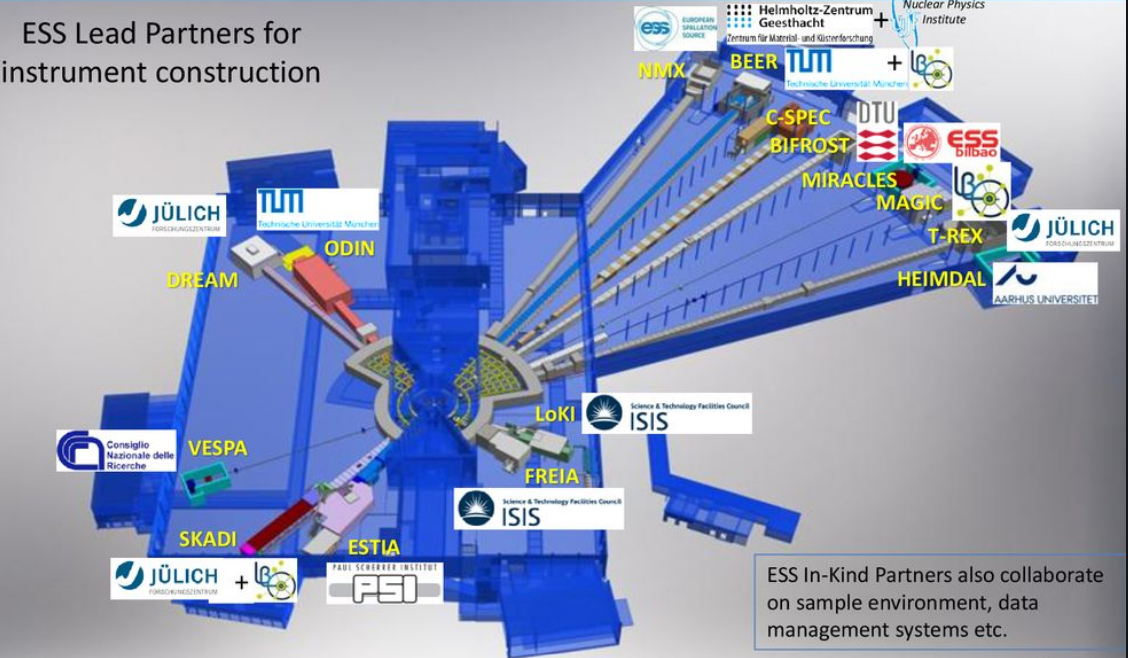Instruments and Detectors
The 15 neutron instruments selected for construction at the European Spallation Source are versatile, and most of them will serve several different scientific communities. Developed and built by teams across Europe, they are each designed to be world-leading from day one. ESS will offer neutron beams of unparalleled brightness and in long pulses, which necessitate the development of new technology and approaches in the design of the 15 approved instruments to be built during the construction phase and additional ones to be built during operations. The high flux and unique time structure, in combination with unmatched instrument flexibility, will make possible many investigations that are out of range today.
The ESS Detector Group has been working on detector development, with extensive collaborations throughout Europe. These collaborations enable ESS to both build up detector development competence to support ESS during the Construction Phase, and to develop capacity in Europe to provide detectors for ESS. In general, there is a capacity gap for neutron detector production across all neutron facilities worldwide, but the goal of the Detector Group is first and foremost to develop solutions that cost-effectively meet the needs of the ESS instruments.
Based upon the requirements of the 15 instruments described above, detector technologies are being developed to satisfy each instrument's needs. The tailoring of the detector design is not only constrained by the instruments themselves, but also the helium-3 crisis and the economy associated with it.
Current
- A lot of technology development has gone into the development of the Boron-10 based detectors to meet both the count rate challenge at ESS and the reduction in availability of 3He detectors.
- Together with the Boron-10 challenge, different detector types needed to be considered.
- Detectors for Reflectometry - very high count rate with high resolution.
- Large-Area Detectors for Spectroscopy - high efficiency and low noise over large surface.
- The technology achievements within both Boron and Gadolinium based converters are recognised worldwide and other facilities show great interest.
- Many sample environment systems are considered and will be built tailored to the nature of the different instruments requiring new developments.
- Automation and remote control of experiments driven by throughput and reproducibility requirements, but also by lowering environmental impact of travel to the facility.
Future
- Dissemination of the detector technologies will help to create supporting communities around the world.
- The build labs and competence at ESS will be commercially explored so further technology developments can be performed.
- Further technology iterations of the Boron-10 detectors will be considered and tailored to available components and material.
- Many instruments and sample environment systems have overlapping technology and functionality, and synergies will be explored.
- The level of generic technology developments will be considered so the highest possible interoperability between instruments can be achieved together with minimized maintenance costs.
For more information on the Detector Systems, visit this page on the ESS website.


